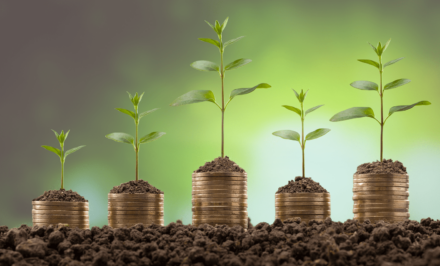In the face of an escalating environmental crisis, every decision we make has the potential to impact our planet. Many of us have taken steps to live more sustainably by recycling, reducing our energy consumption and even altering our diets. Yet, there’s another significant aspect of our lives that often goes overlooked when we talk about sustainability: our banking.

Your bank account is more than just a place to store your money; it’s an extension of your values, principles and impact on the world. Traditional banks, while often providing us with convenience and easy access to financial services, may invest in industries that contribute to environmental degradation and climate change, whether we realise it or not. However, there’s a green alternative emerging – sustainable banking.
Choosing the most sustainable bank account means ensuring your money is working for you and for the environment. It means your hard-earned money is being invested in projects that are aligned with your values, such as renewable energy, sustainable agriculture and green construction, rather than fossil fuels and deforestation.
This guide aims to shed some light on sustainable banking in the UK, offering insights into what it means, why it matters and how you can make the switch. With the right information, you can turn your banking into a force for environmental good, contributing to a greener, healthier planet for generations to come.
Sustainable Banking: Making money matter for the environment
As we pivot towards a more eco-conscious society, traditional sectors are being challenged to reform their practices for a sustainable future and banking is no exception. But what exactly is sustainable banking?
At its core, sustainable banking, also referred to as “green”, “ethical” or “eco-friendly” banking, operates on the principle that finance should contribute to the welfare of society and the health of the planet. It reframes the role of financial institutions, shifting from a purely profit-centric approach to a balance of social, environmental and economic responsibilities.
Unlike traditional banks that may fund industries contributing to environmental damage – such as fossil fuels, unsustainable agriculture and harmful mining practices – sustainable banks commit to using their capital to positively influence the environment. They do this by investing in green initiatives such as renewable energy projects, sustainable housing and organic farming.
What’s more, sustainable banks often implement stringent lending criteria, refusing to lend to businesses and industries that harm the environment. This commitment doesn’t just stop at lending; it permeates their operations. Many sustainable banks aim for carbon-neutral operations, reduce paper usage by promoting digital banking and commit to other eco-friendly practices.
However, it’s not just about the environment. Sustainable banks often adhere to a broader ethos of ethical practice, such as fair treatment of employees, responsible executive pay and a commitment to financial inclusion. They believe in creating a sustainable future through the simultaneous consideration of people, planet and profit.
Understanding the concept of sustainable banking is a stepping stone towards aligning your financial choices with your values. The ‘most sustainable bank account’ isn’t just a buzz phrase; it’s a vehicle to contribute towards a sustainable future. In the rest of this guide, we’ll delve into the criteria for choosing such a bank account and highlight some of the leading sustainable banks in the UK. Together, we can turn every pound in our bank accounts into a vote for a greener and more ethical world.
Navigating your green choices: What to look for in a sustainable bank account
How can you separate the genuinely eco-friendly banks from those merely painting their practices green? Here are some key criteria to guide your search for the most sustainable bank account:
-
Transparency with investments
One of the hallmarks of a truly sustainable bank is transparency about where they invest their money. Look for banks that openly share their investment portfolio, demonstrating a clear commitment to funding green and ethical projects. They should steer clear of funding industries that are harmful to the environment, such as fossil fuels and instead focus on supporting renewable energy, sustainable agriculture and other eco-friendly initiatives.
-
Positive environmental impact
A sustainable bank should be actively contributing to the fight against climate change. This means not just avoiding harm, but actively doing good, such as funding projects that reduce carbon emissions or supporting innovations in green technology. Look for banks with explicit policies and targets for environmental improvement, such as carbon neutrality goals.
-
Sustainability certifications and awards
Certifications from reputable bodies can be a good indicator of a bank’s commitment to sustainability. Look for certifications like the B Corp Certification, the Fair Finance Guide score or awards from organisations dedicated to promoting sustainability in finance.
-
Sustainable operations
Sustainability should not just be about where the bank lends or invests, but also about how the bank operates. Check if the bank promotes paperless banking, uses energy-efficient infrastructure and takes steps to reduce its carbon footprint. Many sustainable banks also support local communities and uphold fair employment practices, contributing to social sustainability.
-
Innovative green products
The most sustainable banks are those that offer products and services aimed at promoting environmentally-friendly behaviours among their customers. This could be anything from green mortgages for energy-efficient homes to discounted loan rates for green cars or sustainable business initiatives.
-
Positive customer reviews
What do existing customers have to say about the bank? Reviews can give you insight into the bank’s customer service, as well as its adherence to its environmental commitments.
Remember, not all ‘green’ banks are created equal. It’s essential to do your research to find the most sustainable bank account that aligns with your environmental values and offers the services you need.
Top sustainable banks in the UK
Triodos Bank
Triodos Bank is a frontrunner in sustainable banking, not just in the UK, but across Europe. With a clear policy of lending only to organisations and projects with social, environmental or cultural value, Triodos provides a range of banking services, including current accounts, savings accounts and investment opportunities. Every project funded by Triodos is listed on its website, demonstrating transparency and accountability.
The Co-operative Bank
The Co-operative Bank is known for its ethical policy, which is informed by its customers. It promises not to provide banking services to any business or organisation that conflicts with its values and ethics. The bank offers current accounts, savings accounts and loans, among other services.
Starling Bank
Starling Bank, one of the newer banks on the market, is determined to play its part in protecting the environment. The bank was a founding member of TechZero, a climate action group set up in 2021 for UK tech companies fighting the climate crisis.
Ecology Building Society
Specialising in building sustainable communities, the Ecology Building Society provides mortgages for energy-efficient building and renovation projects. They also offer savings accounts, with the money being used to support sustainable developments.
Charity Bank
As the name suggests, Charity Bank aims to lend to charities, social enterprises and community organisations. It’s owned by charitable foundations, trusts and social purpose organisations and it offers a range of services including savings accounts and loans.
Monzo
When Monzo first came onto the banking scene as an all-digital bank, it was a disruptor. It has grown rapidly since then and as a branchless digital bank, it has a much lower carbon footprint compared to traditional banks. To combat its other carbon emissions, Monzo lives by its four environmental commitments and, so far, has proven serious about being sustainable. If you are looking for a digital bank, Monzo is a good sustainable alternative.
When choosing the most sustainable bank account, consider your personal banking needs alongside each bank’s environmental and ethical credentials. It’s not just about picking the greenest bank, but the one that can best serve you while aligning with your commitment to a sustainable future. And, as always, we recommend that you review each bank’s website or contact them directly to learn about their latest sustainability initiatives and offerings.
Start ups to keep an eye on
Carbonyte
Carbonyte is an innovative green banking startup that combines digital banking services with a focus on carbon reduction and sustainability. With Carbonyte, customers have access to a comprehensive dashboard that tracks their carbon footprint based on their spending habits, helping them become more aware of their environmental impact. The startup also collaborates with renewable energy and carbon offsetting partners, allowing users to contribute directly to impactful projects while managing their finances.
Tred
Tred is a green banking startup that aims to empower individuals to make a positive impact on the environment through their everyday spending and banking activities. Tred offers a unique feature where a portion of every transaction made with their green debit card goes towards funding carbon offset projects, helping users reduce their carbon footprint. Through partnerships with sustainable businesses and projects, Tred encourages users to support eco-friendly initiatives while providing a seamless banking experience.
Weighing the pros and cons: Benefits and drawbacks of sustainable banking
Switching to a sustainable bank account isn’t just an eco-friendly decision; it has several practical advantages. However, as with any financial choice, it’s crucial to understand both the benefits and potential drawbacks.
The benefits of sustainable banking:
-
Aligning your money with your values
With a sustainable bank account, you can ensure your money is working for causes you believe in. Your deposits can help finance eco-friendly projects and businesses contributing to a sustainable future, bringing you peace of mind and satisfaction.
-
Contributing to environmental preservation
Sustainable banks play a direct role in environmental preservation. They finance green projects and avoid industries that harm the environment, reducing your carbon footprint indirectly.
-
Driving change in the financial industry
By choosing a sustainable bank, you signal to the rest of the financial industry that consumers care about environmental responsibility. Increased demand for green banking can spur other banks to adopt more sustainable practices.
-
Potential for financial incentives
Some sustainable banks offer financial incentives like lower interest rates for eco-friendly loans or discounts for green lifestyle choices.
The drawbacks of sustainable banking:
-
Limited physical branches
Many sustainable banks operate primarily online to reduce their environmental footprint. If you prefer face-to-face banking, a sustainable bank might not be the best fit for you.
-
Smaller range of services
Sustainable banks can sometimes offer a smaller range of services compared to traditional banks. You may not find as many types of accounts or as wide a range of loan and investment products.
-
Potential for higher costs
While not always the case, some sustainable banks may have higher fees or require a higher minimum balance compared to traditional banks. Always check the terms and conditions before opening an account.
How to switch to a sustainable bank
Once you’ve decided to move towards sustainable banking, the actual switch can seem a little daunting. However, thanks to The Current Account Switch Service (CASS) in the UK, the process can be quite seamless. Here’s a step-by-step guide on how to switch to a sustainable bank:
-
Research your options
Start by exploring your options. Identify the sustainable banks that align with your values, offer the services you need and are regulated by the Financial Conduct Authority (FCA). Look at factors such as transparency, environmental impact, certifications, customer reviews and the range of products and services they offer. Not every bank and building society is signed up to CASS, so always check before making any banking decisions.
-
Open your new account
Once you’ve selected a sustainable bank, the next step is to open an account. Most banks now allow you to do this online. You’ll need to provide some personal information and may need to deposit a minimum amount to activate your account.
-
Switch your direct debits and standing orders
The CASS allows you to switch your account, including all direct debits and standing orders, within seven working days. Your new bank will take care of transferring all your payments from your old account to your new one. The process is free and hassle-free. Furthermore, it guarantees that any payments made to your old account by mistake will be redirected to your new account for a minimum of three years.
-
Notify relevant parties
Notify your employer of your new bank details for accurate salary transfers. Similarly, let any other individuals or companies who regularly send money to your account know about the change.
-
Close your old account
Once all your payments have been successfully switched to your new account, and you’ve checked that everything is in order, you can close your old account.
-
Enjoy a more sustainable banking experience!
Now that you’ve switched to a sustainable bank, you can rest easy knowing that your money is working towards a better future.
By banking on the environment, you’re voting with your money for a greener and more sustainable world. Now that’s a switch worth making!
The bottom line
Your bank account choice affects both your finances and the environment significantly. Switching to a sustainable bank is a powerful way to ensure your money is working for a better, greener future. Remember, sustainable banking combines economic needs with the planet’s health, going beyond a passing trend.
Every sustainable banking choice, no matter how small, contributes to this collective effort. So, if you’re ready to align your financial decisions with your commitment to sustainability, why not make the switch today? After all, when it comes to creating a sustainable future, every penny counts.
If you’re looking for ways to be ‘greener’, take our green score to find out your carbon footprint and discover practical ways you can reduce your impact.













